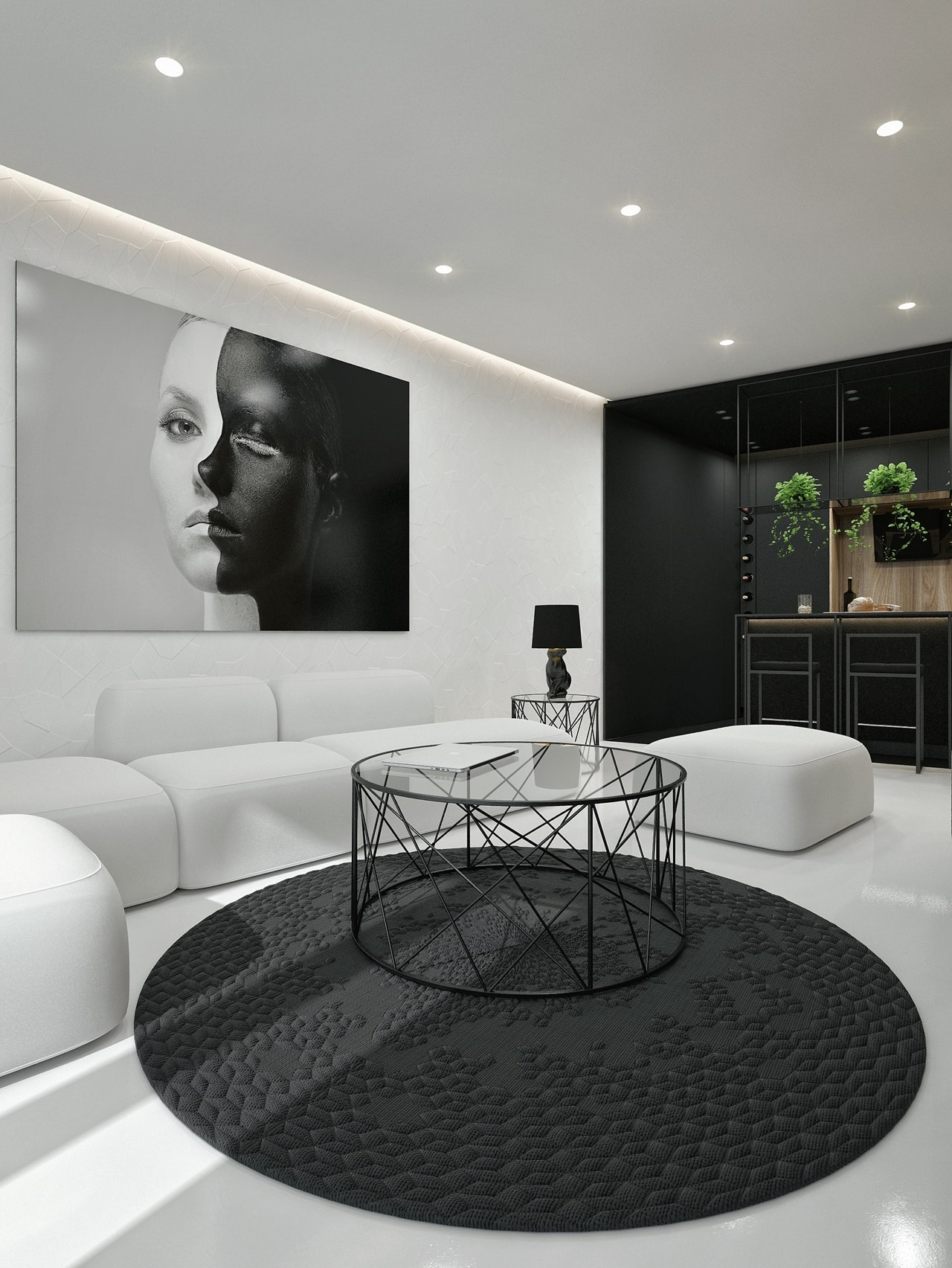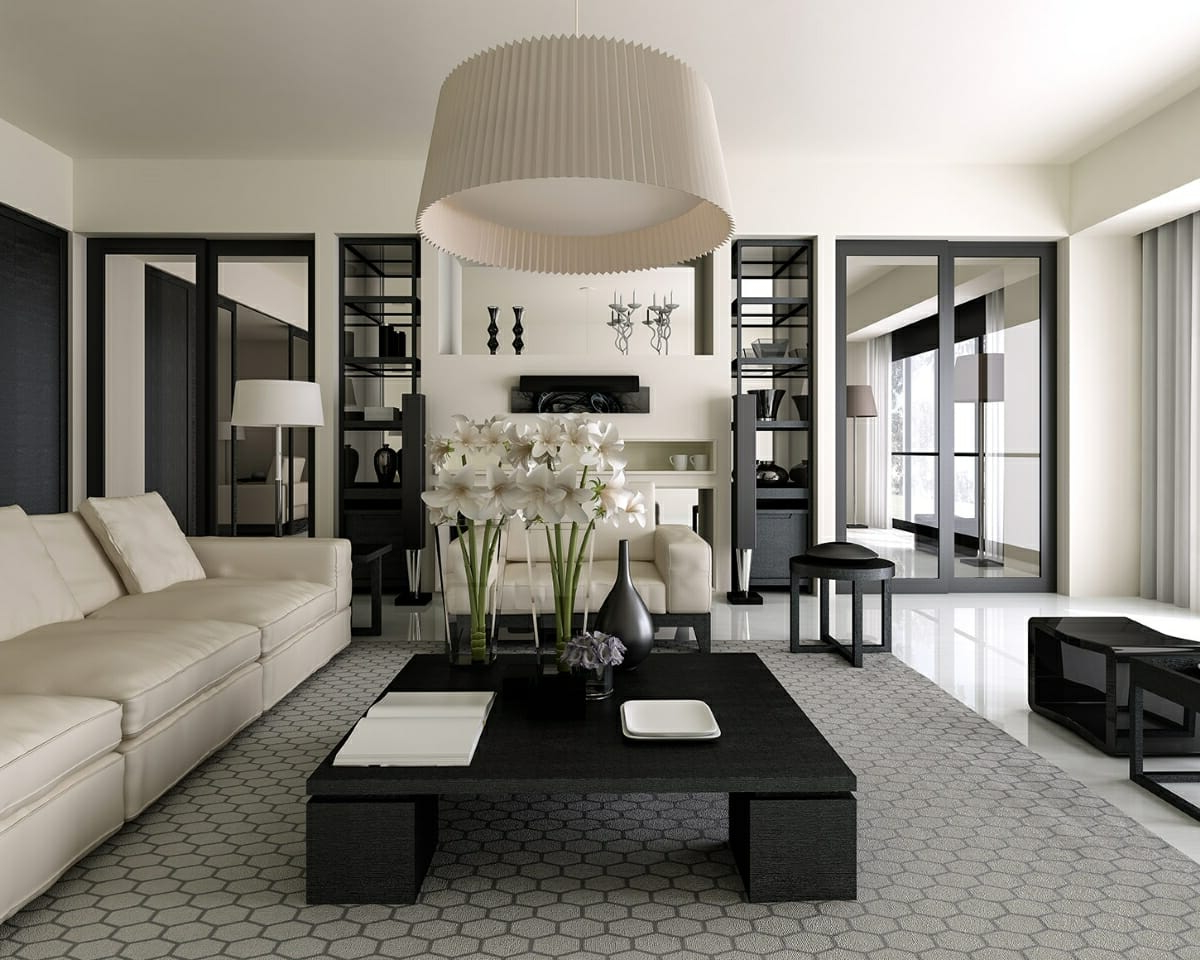There’s something undeniably powerful about the classic duo of black and white. This pairing doesn’t just create visual interest—it builds character, establishes mood, and transforms ordinary rooms into extraordinary spaces. Whether you’re starting fresh or updating existing decor, understanding how to properly balance these two colors can elevate your home’s aesthetic to new heights. The key lies not just in using them, but in knowing when, where, and how to apply them effectively.
When you think about it, black and white represent the very essence of design simplicity. They’re the foundation upon which countless masterpieces have been built. In interior design, this color combination offers an almost unlimited range of possibilities. It’s bold enough to make a statement, yet subtle enough to create calm and sophistication. What makes this pairing so incredibly versatile? Because it works whether you want drama or tranquility, formality or casual comfort. The secret isn’t just in choosing black and white items, but in creating harmony between them. Think of it like music—without proper rhythm and balance, even the most beautiful notes can sound chaotic. This guide will walk you through everything you need to know to make this timeless combination work beautifully in your space.
Understanding the Psychology Behind Black and White
Before diving into practical applications, it helps to understand why black and white have such a profound impact on our emotional state. Black brings depth, mystery, and power. It creates a sense of stability and luxury. White, on the other hand, represents purity, cleanliness, and openness. Together, they create a dynamic tension that can either energize or soothe a room. The psychology of these colors means they’re particularly effective in spaces where you want to control atmosphere. A bedroom might benefit from softer whites and deeper blacks to promote relaxation, while a living room could handle bolder contrasts for a more vibrant feel. This understanding allows you to make intentional choices rather than random selections. Consider the energy you want to create in each area of your home. Do you want to feel grounded and secure? Or do you crave inspiration and excitement? Your answer often guides the appropriate balance of black and white in that space.
Creating Visual Balance Through Proportion
One of the biggest mistakes people make with black and white design is creating imbalance. If you have too much black, the space can feel heavy and oppressive. Too much white, and it might seem sterile or cold. The key is finding the right ratio. Experts suggest aiming for a 60/30/10 rule, where 60% of the space features one color, 30% the other, and 10% a third element. In practice, this might mean 60% white walls with 30% black furniture and 10% accent pieces in gray or another neutral. Another approach is to use varying shades within each color family. Instead of pure black and pure white, consider charcoal gray and cream, or deep navy and off-white. These subtle variations create a more harmonious look. Try this experiment: stand in your room and see if you can identify where the visual weight lies. Is it pulling toward one end of the room? That’s your clue to adjust proportions.
Choosing the Right Shades for Your Space
Not all blacks are created equal, and neither are all whites. The key is matching your shade selection to your room’s lighting and size. For smaller spaces, lighter grays and off-whites work best. They reflect light and make the room appear larger. Darker blacks and charcoal tones can overwhelm small areas and make them feel cramped. In larger rooms, you have more flexibility. You can experiment with deeper blacks and richer whites to create dramatic contrast. Natural light plays a huge role too. A room with lots of sunlight can handle deeper blacks because the light helps balance them out. Rooms with limited natural light benefit from lighter blacks and warmer whites. Consider testing paint samples on your walls during different times of day. The way light hits these colors can completely change their appearance. For instance, a true black might look more charcoal under fluorescent lights, while a warm white can appear almost yellow in certain conditions. Always test before committing to large projects.
Mixing Textures for Added Depth
Here’s where the magic really happens. Black and white alone can look flat and basic, but when you layer different textures, they become rich and inviting. Think about how a velvet black chair feels compared to a linen white sofa. The tactile differences create visual interest without adding complexity. Consider these texture combinations: velvet in black against linen in white, or brushed steel in black with marble in white. The contrast between smooth and rough surfaces adds dimension that makes the space feel alive. Don’t forget about patterned elements too. A black and white geometric rug can anchor a room perfectly, while a white and black striped pillow adds subtle movement. The key is to limit yourself to no more than three main textures in one space. Too many textures can create chaos. Choose one luxurious texture (like silk or velvet) and pair it with two more accessible ones (such as cotton or wood). This creates a balanced hierarchy of materials that feels both sophisticated and comfortable.
Strategic Placement in Different Room Types
Every room has its own personality, and black and white should reflect that. In kitchens, consider using black appliances with white cabinetry for a clean, modern look. A black island with white countertops creates a striking focal point. Living rooms benefit from a black and white seating arrangement with white walls and black accents. This setup creates a calm environment perfect for conversation. Bedrooms can embrace the elegance of black and white bedding with white walls and black nightstands. The contrast provides visual interest without being overwhelming. Bathrooms offer unique opportunities for black and white combinations. Black and white tiles create a spa-like atmosphere, while black fixtures against white walls provide a contemporary edge. Consider the flow of traffic in each room. Black and white elements should enhance rather than obstruct movement. Place larger black pieces like sofas or dining tables in areas where they won’t block pathways. Use smaller black accents like vases or frames to add interest without creating visual clutter.
Adding Color Without Breaking the Harmony
Many people fear that introducing color into a black and white scheme will ruin the balance, but it’s actually quite manageable. The trick is to choose colors that complement rather than compete with your base palette. Think of color as a supporting character rather than the star. Green, blue, or warm terracotta can work beautifully. These colors pick up on the undertones of black and white without overwhelming them. A single pop of color in a neutral space can create a stunning focal point. For example, a bright yellow throw pillow on a white sofa or a blue vase on a black side table. The key is moderation. One or two carefully chosen colored pieces can transform a room without disturbing the overall harmony. Avoid using multiple bright colors together—they’ll fight for attention. Instead, let one color shine while the others provide supporting roles. This approach keeps the room feeling cohesive while adding the excitement that many people crave.
Practical Tips for Implementation
Let’s talk about the real-world application. Start small. Choose one area of your home to experiment with first—a hallway, a coffee table, or a single wall. This way, you can test your instincts without major commitment. When shopping for pieces, look for items that already incorporate both colors. You’ll find that many contemporary pieces naturally blend black and white elements. Don’t overlook accessories. Pillows, artwork, rugs, and decorative objects are often the easiest ways to introduce the palette. Pay attention to the room’s existing architecture. If you have high ceilings, consider using black in lower areas and white above to create vertical flow. If you have low ceilings, keep everything light and airy. The goal is to work with your space rather than against it. Finally, remember that this style is timeless. Unlike trends that come and go, black and white design principles remain consistently elegant. Invest in quality pieces that will last, and you’ll find that your space ages gracefully while maintaining its appeal.
Black and white interior design isn’t just about following rules—it’s about creating spaces that feel authentically you. It’s about finding that perfect balance between boldness and restraint, between drama and serenity. The beauty of this approach lies in its adaptability. Whether you prefer a minimalist aesthetic or a more eclectic style, the fundamental principles of black and white design remain consistent. The key is to start with intention, proceed with care, and trust your eye. You might begin with a simple black and white throw, then gradually build upon it. Over time, you’ll develop an intuitive sense of what works and what doesn’t. Remember, the goal isn’t perfection—it’s creating a space that feels right for you. Sometimes that means making adjustments along the way. The most important thing is that you feel comfortable and inspired in your environment. When done thoughtfully, black and white design becomes more than just decoration; it becomes a reflection of your personal style and values. It’s a testament to the idea that sometimes the simplest choices lead to the most impactful results.
















